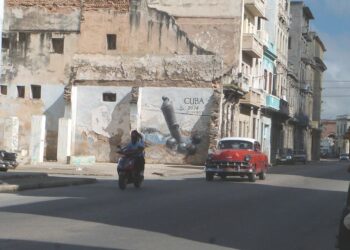Researchers from the Center for Advanced Studies (CEA) of Cuba designed and produced a product for the diagnosis of PCR samples, the first innovation based on nanotechnology developed by Cuban scientists to combat COVID-19.
The general director of the Center for Advanced Studies, Angelina Díaz, explained that it is a product that uses magnetic nanoparticles to extract ribonucleic acid (RNA) from the SARS-CoV-2 coronavirus, which causes the infectious disease, the newspaper Granma reported.
https://twitter.com/PresidenciaCuba/status/1359891470870847498?ref_src=twsrc%5Etfw%7Ctwcamp%5Etweetembed%7Ctwterm%5E1359891470870847498%7Ctwgr%5E%7Ctwcon%5Es1_&ref_url=https%3A%2F%2Foncubanews.1eye.us%2Fcuba%2Fcuba-produce-diagnosticador-de-pcr-a-partir-de-nanotecnologia%2F
The Cuban diagnostic product, which was validated at the Pedro Kourí Institute of Tropical Medicine (IPK), can be used with imported PCR kits and does not require a cold chain for its conservation, said Díaz.
It also favors greater security in the detection of positive cases because its high sensitivity and ability to concentrate the samples, prevents false negative diagnoses.
The Center for State Control of Medicines, Equipment and Medical Devices (CECMED)—Cuba’s regulatory institution—has already granted it authorization for emergency use, the source indicated.
Based on this application of nanotechnology, Cuba is in a position to carry out the extraction and concentration of RNA by the magnetic method for some 20,000 daily PCRs, according to Granma.
The general director of the CEA stressed that the island implements a National Nanoscience and Nanotechnology Program, within which 26 research projects linked to prioritized sectors of national life are currently being executed, including bionanomedicine, agriculture, the environment, construction and the energy sector.
In May 2020, scientists from that center together with specialists from the IPK managed to capture an image of the SARS-CoV-2 coronavirus, the first to be obtained from clinical samples in Cuba.
Cuban scientists take micrographs of the coronavirus for first time
Images of the virus were obtained using the Scanning Electron Microscopy technique, according to a post on the CEA’s Twitter account.
Located west of Havana, the Center is multidisciplinary. Among its main purposes is to promote the presence of Cuba within the international market of bionanotechnology, a discipline that seeks to build machines at a nanometric scale using the knowledge of molecular biology.










